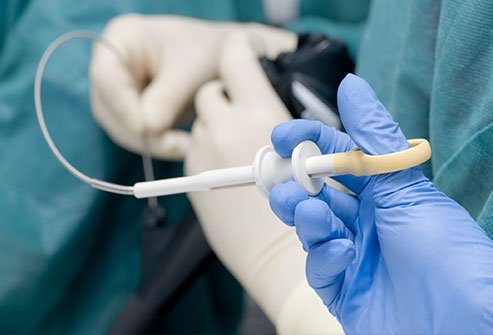Why Is a Transbronchial Biopsy Performed?
What is a transbronchial biopsy?
A transbronchial biopsy is a procedure that examines the lungs. In a transbronchial biopsy, the doctor passes a flexible telescope called a bronchoscope through the nose or mouth to cut a small piece of the lung tissue for further lung analysis. The procedure is typically used to find a problem in the lungs.
Why is a transbronchial biopsy performed?
There are several reasons patients might require a transbronchial biopsy. The most common reasons are as follows:
- Tumor confirmation
- Lung changes observed on computed tomography (CT) scan or other imaging tests
- Causes for difficulty breathing such as suspected interstitial lung disease
- Suspected cause for lung transplant rejection
- Unexplained cough lasting more than three months
- Hemoptysis (coughing up blood)
- Severe lung or bronchial infections
How long does a transbronchial biopsy take?
Usually, a transbronchial biopsy is completed within one hour. However, in rare cases, the procedure may extend for a couple of hours depending on the patient’s complications. The procedure is usually done under local anesthesia and mostly as an outpatient procedure. A transbronchial biopsy is performed by a pulmonologist or lung specialist.
- The patient may be advised not to eat or drink for at least four hours prior to surgery.
- A local anesthesia gel and spray is used to numb the nose and throat. Local sedatives are used for the patient to relax during the procedure.
- Patient’s oxygen levels and heart rate are monitored during the procedure.
- The doctor will pass a bronchoscope (flexible telescope) through the nose and down into the lungs. Sometimes, the bronchoscope will be passed through the patient’s mouth instead of their nose.
- The doctor uses a bronchoscope to examine the patient’s bronchi (airways) and then gently pushes small forceps down one of their airways (a bronchus) into the lungs.
- The doctor will use the forceps to take samples of the lung tissue and use an X-ray machine to determine the location within the lung from which the biopsies are taken.
- The doctor may also use small amounts of salty water to obtain other further samples for analysis.
- The patient may have to undergo a chest X-ray after the procedure.
- Following the procedure, the samples will be examined to determine the cause of the problem.
What are the risks involved in a transbronchial biopsy?
Although the procedure carries some risks, they’re low. This test provides important diagnostic information. It may help the patient avoid a major surgery, which is much riskier.
- Complications of a transbronchial biopsy include the following:
- Allergic reaction to sedatives
- Infection
- Bleeding
- Damage to the vocal cords
- Injury to the lungs
- Irregular heart rhythms
- Pneumothorax or leaking of air from the lungs
- Heart attack
- Hypoxemia or low blood oxygen

